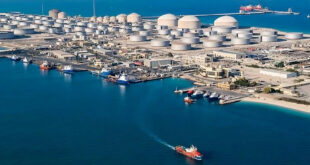Iran’s economy will experience an inflation decline by approximately 7% in late March next year, according to an analytical report.
Inflation at the end of the current fiscal year will stand at 34.2%, down from 41.1% of the previous year, the report published on Monday by the Tehran Chamber of Commerce said.
The report, which cited figures by the International Monetary Fund (IMF), also dwelt upon other major economic indicators in Iran, including the liquidity growth rate, which it said would also decline by 16.3% in the current fiscal year.
It said liquidity in Iran will grow 19.5% to reach 30,055 trillion rials ($175 billion) in late March 2021. Liquidity had grown by 35.8% in the previous fiscal year to reach 25,570 trillion rials (nearly $150 billion).
However, unemployment rate will increase by 2.7% compared to the previous year to reach 16.3% at the end of the current Iranian year, the report added.
Discussing Iran’s trade balance, the report said that the country will see its trade deficit widen to $18.2 billion, down from $0.3 billion posted for the year ending March 2020.
The widening trade deficit is mainly a result of Iran’s lower sale since the country came under a series of unilateral American sanctions in November 2018.
Iran has sought to distance itself away from normal oil revenues through a series of schemes to diversify the economy.
The country has exported more and more non-crude goods and products over the past two years. However, Tehran has kept the doors open to more imports to ensure supplies would suffice the domestic demand in the face of growing American restrictions on trade.
In a relevant report in February, the Statistical Center of Iran (SCI) said that the inflation rate is decreasing in the country, adding that it is down by 1.6 percent in the month ending on February 19, 2020.
The SCI said the consumer price index was down at 37 percent year-on-year in the Persian calendar month of Bahman from 38.6 reported in the month ending on January 20.
It said, however, the rate of price growth compared to the month of Bahman in the previous Iranian year was 25 percent, meaning that households had spent a quarter more on consumer goods and services this year.
The price index in Bahman also declined 1.3 percent on a month-base scale compared to the previous month, it said.
The SCI said yearly price index for households in urban places was down 1.5 percent on 36.5 while rural households were 2.1 percent worse off compared to the previous month at 40.1 percent.
It said that households spent less, around 0.8 percent, on staple food and 1.2 percent less on non-food goods and services in Bahman compared to the previous month.
The updates some amid a renewed surge in prices of foreign currency in Iran.
Many blame the soaring forex prices on tensions with the United States that escalated in early January. Experts say speculative trade in the market has also picked up due to uncertainties surrounding Iran’s position vis-à-vis FATF, a global money laundering watchdog.
The rial further lost its value against major currencies on Thursday with each US dollar sold for 144,000 rials, based on reports from an unofficial market in downtown Tehran and prices seen in currency rate monitoring websites.
In November, Governor of the Central Bank of Iran (CBI) Abdulnasser Hemmati underlined government’s full control over the foreign exchange market, and expressed hope that reduction of inflation rate would continue in the next few months.
Price stability is dominating the currency market and consequently other prices have been stabilized as well, we hope to witness the same inflation reduction trend that has started in the coming months, Hemmati said.
He added that the foreign exchange market is fully controlled, and noted that gas rationing has no influence on the exchange rate and we have complete control over this market.
Hemmati stated that Iran is in a good place with regard to forex reserves.
 Iran Energy News Oil, Gas, Petrochemical and Energy Field Specialized Channel
Iran Energy News Oil, Gas, Petrochemical and Energy Field Specialized Channel




